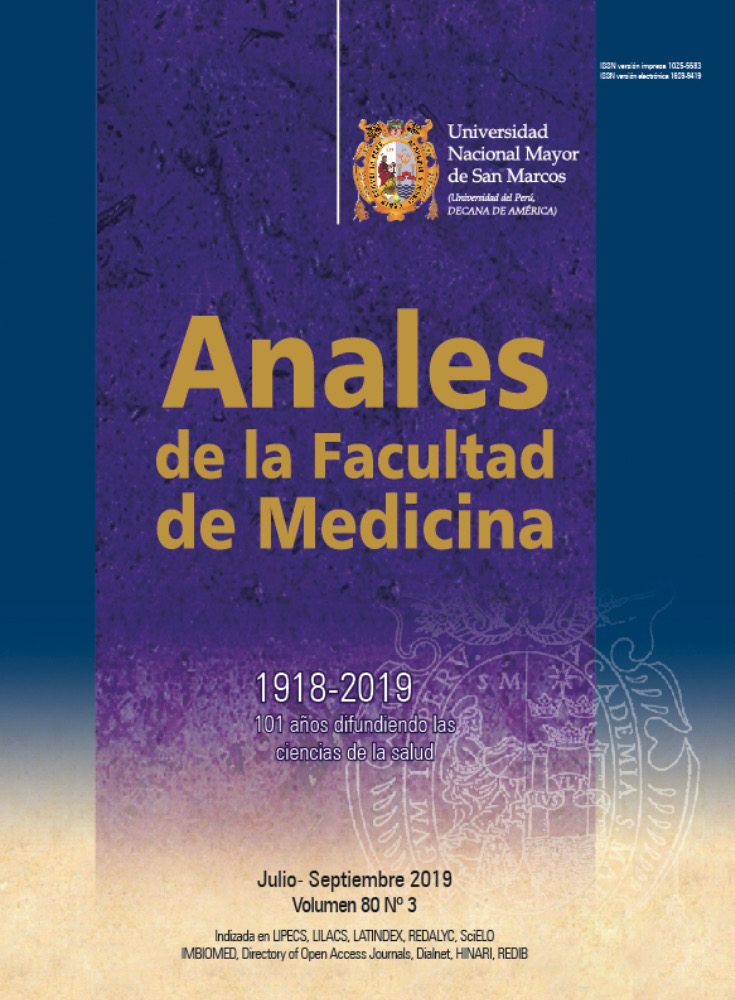Mechanical and experimental development of a flexible cervical disc implant
DOI:
https://doi.org/10.15381/anales.803.16105Keywords:
Prostheses and Implants; Arthroplasty, Replacement; Prosthesis Design; Materials Testing; Animal Structures; Models, AnimalAbstract
Introduction: Cervical arthroplasty is a surgical procedure that involves the use of disc implants with the capacity of preserving segmental movement. It is a challenge for countries like ours to develop alternatives to the high costs of the aforementioned implants, with patented designs, feasible to manufacture, with biocompatibility, safety, and that simulates as much as possible the physiological cervical movements. Objectives: To develop the geometry and mechanics of a patented disc design elaborated with titanium ELI by additive manufacturing, as well as, to verify its compatibility with the physiology of cervical movements. Methods: The study design had three iterative stages: the first one was the development of the implant geometry and the finite-element study using international standards as a reference. In second place, studies of metallography, characterization of the material and fatigue tests of the implant were developed. Finally, a cadaverous animal model was used to confirm the compatibility of the implant with cervical movements. Results: The implants manufactured by forging or by additive manufacturing are compatible with international standards. 84 x-ray studies were performed on 18 pig necks. In 100% of the cervical columns of the pigs, the range in flexion was smaller than that of extension. There was a greater range of motion when two implants were used and when the implant was larger. Conclusions: The flexible cervical implant made by forging or a titanium-ELI additive manufacturing have promising results, because of that, an experimental use in patients, who needs cervical arthroplasty, could be considered.
Downloads
Published
Issue
Section
License
Copyright (c) 2019 Anales de la Facultad de Medicina

This work is licensed under a Creative Commons Attribution-NonCommercial-ShareAlike 4.0 International License.
Those authors who have publications with this magazine accept the following terms:
- Authors will retain their copyrights and guarantee the journal the right of first publication of their work, which will be simultaneously subject to Creative Commons Attribution License that allows third parties to share the work as long as its author and its first publication this magazine are indicated.
- Authors may adopt other non-exclusive licensing agreements for the distribution of the version of the published work (eg, deposit it in an institutional electronic file or publish it in a monographic volume) provided that the initial publication in this magazine is indicated.
- Authors are allowed and recommended to disseminate their work over the Internet (eg: in institutional telematic archives or on their website) before and during the submission process, which It can produce interesting exchanges and increase quotes from the published work. (See El efecto del acceso abierto ).



